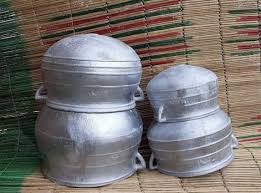Copyright vogue

Your scalp isn’t neglected, just misunderstood. Shampoo cleans the surface, but it doesn’t always lift everything that settles there. Layers of product residue, oil, and pollution can stay behind, slowly dulling your hair’s bounce. You exfoliate your face and scrub your body, but your scalp, which is skin too, rarely gets the same care. If your hair starts feeling greasy, flat or flaky soon after washing, the reason may not be your shampoo. It’s often buildup; a mix of dead skin and leftover product that clogs follicles and slows growth. Below, dermatologists explain what scalp exfoliation really does, how often to try it and how to get it right without overdoing it. Why your scalp needs a scrub According to Dr Ashini Bhatt, dermatologist and cosmetologist at Mayflower Women’s Hospital, Ahmedabad, “Someone who has an oily scalp, uses regular scalp serums, oils or styling products, or does sweaty workouts is inviting buildup to a party on their head.” scalp exfoliation removes dead skin cells, excess oil and product gunk, unclogging your follicles so your hair can finally breathe. The result is healthier roots, reduced flakiness, better product absorption and a scalp that doesn’t itch like a scratchy sweater. Dr Anupriya Goel, aesthetic dermatologist and medical director at Berkowits Hair and Skin clinics, focuses on the pros of exfoliation and explains, “Proper scalp exfoliation improves circulation, balances oil production, and even reduces inflammation caused by bacterial buildup.” How often should you scrub Before you turn scalp exfoliation into a daily hobby, Dr Bhatt recommends exfoliating once or twice a week, depending on your scalp type. “Oily scalps can handle up to three times a week, while dry scalps should tone it down to once.” Dr Goel expands: Oily scalp: twice a week Normal scalp: Once a week Dry or sensitive scalp: Every 10–14 days If you’re dealing with dandruff, psoriasis or eczema, exfoliate only under a dermatologist’s supervision. “Use keratolytic agents like salicylic acid or lactic acid,” advises Bhatt. “They break down thick scales and allow medicated treatments to penetrate better.” Physical vs chemical Physical exfoliants are gritty scrubs with microparticles that physically buff away dead skin and chemical exfoliants are acids like salicylic or glycolic that dissolve buildup. Dr Bhatt calls chemical exfoliation gentler and better even for sensitive scalps if done once a fortnight. Dr Goel adds, “Chemical exfoliation gives even results with less irritation risk. Physical scrubbing often causes micro-tears and trauma.” Chemical exfoliation wins the debate. Post-exfoliation care After you’ve given your scalp a good cleanse, it might feel a little exposed, like you just ran a marathon without sunscreen. “Rinse with lukewarm water,” advises Dr Bhatt, “and follow up with soothing ingredients like aloe vera, tea tree oil, coconut oil, or oatmeal.” Whereas, Dr Goel recommends hydrators like niacinamide to reduce inflammation and regulate oil production, centella to promote healing and reduce redness, hyaluronic acid, and ceramides to restore barrier functions. Can you overdo it? Yes, if your scalp starts burning, flaking more or feeling like it’s on fire — you’ve over-exfoliated. “Too much exfoliation can disrupt your scalp’s pH and irritate it,” warns Bhatt. Goel adds, “If you experience persistent irritation, painful lesions or sudden hair loss after exfoliating? It’s time to see your dermatologist.” DIY or professional products? Before you reach for that kitchen sugar scrub, hold it! DIY scalp scrubs may sound fun and pocket-friendly but can be harsh and unbalanced. Dr Bhatt advises to use a dermatologist-approved chemical exfoliant with salicylic or glycolic acid.” Dr Goel agrees that professional products have controlled pH and uniform particle size, which means less irritation and more satisfaction. The winter edition The cold weather might be great for hot chocolate, but your scalp? Not so much, it needs extra attention during the winters, “Cold temperatures and dry air make your scalp itchy, flaky and inflamed,” warns Dr Bhatt. “Psoriasis flares up and oil production drops, leading to excess cell turnover.” Dr Goel suggests switching to barrier-repairing products with ceramides and keeping a humidifier handy. “Hydrate, don’t hibernate.” The scalp detox Insider tip by Dr Goel-she calls it “The Reset Protocol,” her signature 7-day scalp detox designed for those with chronic scalp issues. Here’s the plan Preparation phase (day 1-2) – Use a gentle clarifying shampoo to remove buildup and lightly massage your scalp with your fingers. Avoid styling products. Active treatment (day 3-4) – Exfoliate with 1% salicylic acid and let your hair air-dry whenever possible. Recovery phase (day 5-7) – Apply hydrating scalp treatments and do gentle oil massages two hours before shampooing to avoid dandruff before oiling. Monitor your scalp’s response and adjust as needed. According to Goel, this simple routine has resolved 85% of her patients’ chronic scalp concerns without prescription treatments, making it her most trusted method for achieving a truly healthy scalp. Both Dr Bhatt and Dr Goel agree that your scalp needs exfoliation just as much as your skin does. Do it gently, do it consistently and don’t turn your bathroom into a battlefield. A clean scalp is the foundation of healthy hair, because great hair doesn’t grow from a clogged-up canvas. So, the next time you’re tempted to scratch your head in confusion about your hair health— don’t. Exfoliate instead. Your scalp will thank you (and so will your hairbrush). One final tip from Dr Bhatt, “Scalp exfoliation should be gentle and never aggressive! Be consistent but never too frequent.” And from Dr Goel, “Consistency over intensity — always.” The best clarifying shampoos to beat monsoon buildup and greasy roots 5 dry shampoos that work, plus the hacks that make them better When your hair’s acting out, vitamin A could be what it’s missing



